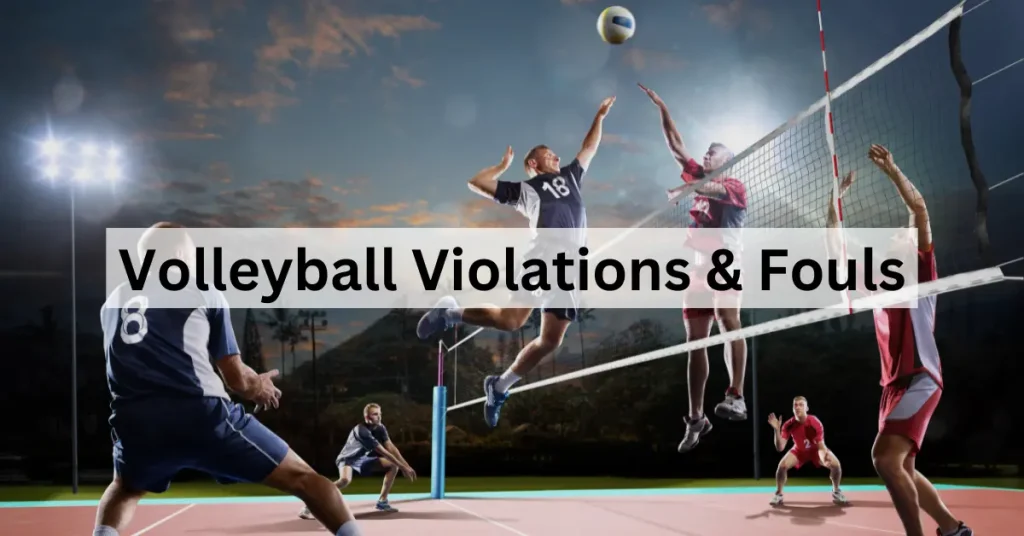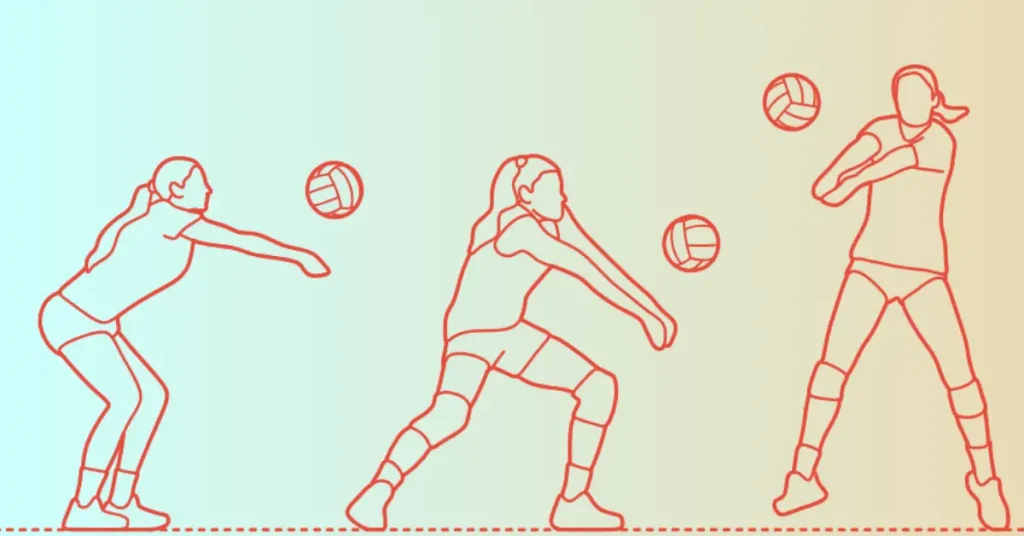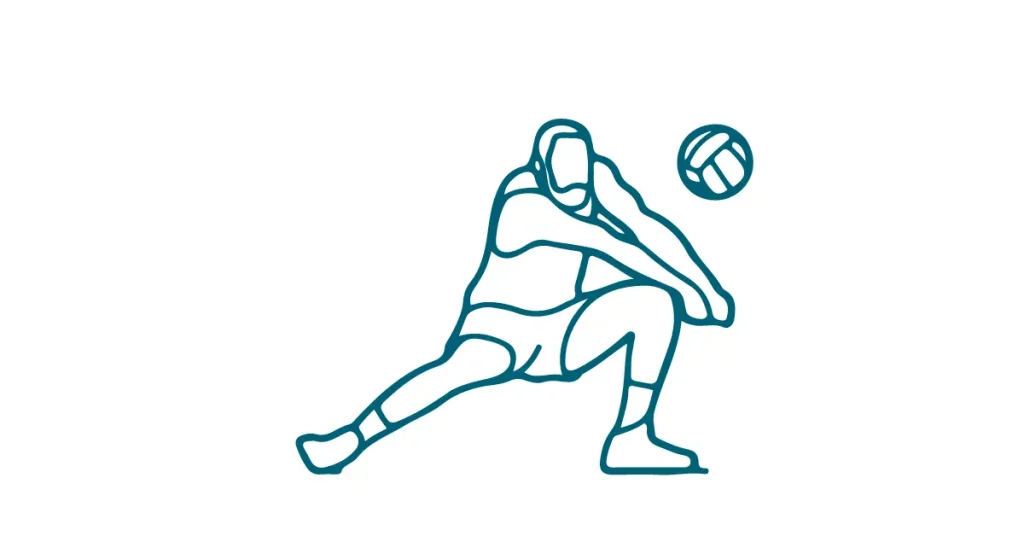Welcome to the world of volleyball, where finesse meets power, and teamwork reigns supreme! As with any sport, volleyball has rules and regulations that players must adhere to to keep the game fair and exciting. In this blog post, we will dive into violations and fouls in volleyball, exploring common infractions that can occur on the court. So grab your knee pads and get ready to learn about the ins and outs of playing by the rules in this dynamic sport.

The Role of Officials in Enforcing Rules
In volleyball, officials play a vital role in maintaining fair play and enforcing rules, ensuring order on the court, and making split-second decisions to keep the game running smoothly. From monitoring for violations like illegal hits or net faults to overseeing player conduct, referees bring authority and fairness to the match, instilling confidence in players that rules will be upheld impartially. Their job demands a deep understanding of volleyball regulations, keen attention to detail, and quick judgment skills to identify infractions promptly. Acting as guardians of the sport, officials uphold integrity and sportsmanship, preventing chaos and preserving the competitive spirit that defines volleyball.
Common Volleyball Violations
Volleyball, a fast-paced and exciting sport, has rules to maintain fairness and sportsmanship on the court. Common violations can occur during intense gameplay, affecting the flow of the match.
One common violation is the centerline violation, where players cannot touch or cross over the centerline under the net during play. This rule ensures player safety and fair competition.
Net violations occur when players make contact with the net during a rally, which can disrupt play and give an unfair advantage to one team. Players need to avoid any contact with the net while playing.
Illegal substitutions are another violation where players enter or leave the court without following proper protocols. Substitutions must be made within designated times to prevent confusion and ensure a smooth transition between players.
Understanding these common violations in volleyball is crucial for all players to uphold sportsmanship and adhere to regulations set forth by official governing bodies in volleyball competitions worldwide.
Types of Violations in Volleyball
Volleyball rules are for making fair gameplay. When these rules are violated, it results in various fouls that can impact the game’s flow. Understanding the different types of fouls in volleyball is crucial for players and officials.
Centerline Violation:
Centerline Violation is a common infraction in volleyball that occurs when players step over the centerline during gameplay. This violation disrupts the game flow and can lead to penalties for the team at fault. Players must be mindful of their positioning on the court to avoid crossing this boundary.
When players cross over the centerline, they risk interfering with plays happening on the opposite side of the net. This can result in unfair advantages or disadvantages, impacting the outcome of rallies. Athletes must respect this boundary and stay within their designated areas during matches to maintain fair play.
Centerline Violation affects gameplay and poses safety risks as players may collide while breaching this rule. By adhering to regulations and staying alert on court boundaries, teams can minimize errors and enhance match performance.
Game Delay:
In the fast-paced game of volleyball, any delay can disrupt the flow and momentum of a match. Game delay occurs when interruptions pause gameplay, testing players’ ability to stay focused.
Common causes of game delays include players not being ready to serve, disputes over calls or rotations, or equipment malfunctions. These pauses can be frustrating for both teams and spectators alike.
To avoid unnecessary delays during a volleyball match, players must communicate effectively with each other and adhere strictly to the rules and regulations set by officials. Additionally, maintaining sportsmanship and respect for all involved can help prevent conflicts that may lead to game delays.
Net Violation:
One of the most common infractions regarding volleyball violations is a net violation. This occurs when a player makes contact with the net during play. The net is a boundary a player cannot touch or interfere with during the game.
Net violations can occur in various ways, such as hitting the ball into the net and causing it to move, touching the net while blocking or attacking, or even crossing over onto the opponent’s side of the court and making contact with the net.
Players must be mindful of their movements around the net to avoid committing this violation. Players must stay aware of their positioning and movements to prevent unnecessary contact with the net.
Illegal Substitution:
Illegal substitution in volleyball occurs when a player enters or leaves the court without following the proper procedures. This violation can disrupt the game flow and lead to penalties for the team. Players must be mindful of substitutions to avoid unnecessary fouls.
To perform a legal substitution, players must wait for the referee’s signal and enter/exit at designated areas on the court. Failure to do so can result in a penalty point awarded to the opposing team. Coaches must communicate effectively with their players regarding substitutions to prevent confusion during gameplay.
Illegal substitutions can impact a team’s momentum and give an advantage to their opponents. By adhering to substitution rules, teams can maintain fairness and sportsmanship on the court. Players and coaches alike need to understand and follow these regulations throughout matches.

Service Fault:
Service Fault is a common violation in volleyball that occurs when the player serving the ball fails to execute it correctly according to the rules. It can happen for various reasons, including stepping on or over the service line, making contact with the net during the serve, or not hitting the ball cleanly over the net.
A service fault results in a point awarded to the opposing team, giving them a gameplay advantage. This violation often happens due to nerves or lack of focus but can be avoided with proper technique and practice.
Players should ensure a consistent serving routine to prevent Service Faults, maintain good footwork, and concentrate on making clean contact with the ball. Players can minimize their chances of committing this violation during a match by staying calm under pressure and focusing on executing a precise serve.
Attack Hit Fault:
In volleyball, an Attack Hit Fault occurs when a player makes contact with the ball during an attack hit but fails to execute it correctly according to the rules. This violation often happens when a player hits the ball outside of the attacking team’s court boundaries or if they touch the net while attempting a spike.
Attack Hit Faults can result in losing the ball to the opposing team or directly awarding them a point. Players must practice their hitting technique and timing to avoid committing this violation during intense game moments.
Players should focus on proper footwork, timing, and accuracy when executing attack hits to prevent Attack Hit Faults. By staying mindful of their position on the court and following through with correct form, players can minimize errors that lead to this foul.
Four Hits Violation:
In volleyball, the four-hits violation occurs when a team makes more than three hits of the ball before sending it back over to the opponent’s court. It is a common error that can easily result in the opposing team winning a point.
This violation typically happens when players are not communicating effectively or are confused about who should make the next hit. As a result, one too many touches on the ball led to this infraction.
Teams need to focus on coordination and teamwork to avoid committing a four-hit violation. Players must know their positioning and responsibilities during each play to ensure that only three hits are made before returning the ball.
Carrying/Lifting:
Carrying or lifting the ball in volleyball is a common violation when a player holds it for too long during contact rather than cleanly hitting it. It often happens when a player’s hand makes prolonged contact with the ball while attempting to set or pass. This rule ensures fair play and prevents players from gaining an unfair advantage by holding onto the ball.
Carrying violations can be tricky to spot, as they happen quickly and require keen observation by officials. Players must make clean contact with the ball to avoid being called for carrying. Developing proper technique through practice and coaching can help players minimize their risk of committing this violation during games.
Double Hit:
The double hit violation in volleyball occurs when a player contacts the ball twice in succession during one attempt to play the ball. This can happen when a player tries to pass or set the ball but unintentionally makes contact twice. Players must make clean, distinct contact with the ball to avoid this infraction.
A double hit can disrupt the game flow and give an unfair advantage to one team. Players must focus on proper technique and timing to ensure they do not commit this violation inadvertently. Developing good hand-eye coordination and practicing fundamental skills can help players avoid double hits during gameplay.
Rotational Fault:
In volleyball, a rotational fault occurs when players fail to rotate in the correct order before serving. Each team must maintain its rotational sequence throughout the game to ensure fair play and equal opportunities for all players on the court.
This violation often results in a point awarded to the opposing team or a loss of serve. Teams must understand and follow proper rotation rules to avoid penalties during matches.
Rotational faults can disrupt the game flow and confuse players and officials. Teams need to communicate effectively and stay organized to prevent this type of violation from occurring.
Volleyball Misconduct Penalty:
Volleyball Misconduct Penalty is a serious violation in the game, often resulting from unsportsmanlike behavior or intentional rule-breaking. It can lead to consequences such as point deductions, player ejections, or even team forfeits.
Players can receive misconduct penalties for arguing with officials, using foul language, intentionally delaying the game, or displaying aggressive behavior toward opponents or teammates. These behaviors disrupt the flow of the game and go against the spirit of fair play that volleyball promotes.
Coaches and players must understand the rules and guidelines set by governing bodies to prevent misconduct penalties. Respect for opponents, officials, and teammates is crucial in maintaining a positive atmosphere on the court.
Assisted Hit Violation:
Let’s talk about the Assisted Hit Violation in volleyball. This violation occurs when a player receives assistance from a teammate to contact the ball during an attack hit. In other words, players cannot use another player or any object to gain an advantage while hitting the ball over the net.
Assisted hits can disrupt the game’s flow and give one team an unfair advantage. It goes against the fundamental principles of fair play and sportsmanship in volleyball. The rule is in place to ensure that each player relies on their skills and abilities to make plays during a match.
Blocking Fault:
The most common scenario where a blocking fault can happen is when a blocker reaches over the net into the opponent’s space before the attacker has made contact with the ball. This infringement results in a violation and gives an advantage to the opposing team.
To prevent committing a blocking fault, players need to time their blocks correctly and ensure they do not interfere with the opponent’s play prematurely. Good judgment and discipline are required to execute proper blocks without crossing into illegal territory.
Penalty System for Violations and Fouls:
Understanding the penalty system for violations and fouls is paramount in volleyball. Officials enforce penalties to maintain fairness and uphold the sport’s rules, with consequences ranging from minor warnings to severe penalties like point deductions or player disqualifications. Players and teams must adhere to regulations set by governing bodies such as FIVB to ensure fair competition and avoid disruptions that could affect their performance.

How to Avoid Violations and Fouls in Volleyball
A solid grasp of the game’s rules and regulations is essential to prevent violations and fouls in volleyball. Pay close attention to player positioning to avoid stepping over lines or entering restricted areas. Effective communication among teammates is key to preventing misunderstandings leading to illegal actions.
Maintain focus and alertness to minimize errors such as double hits or carrying violations. Practice proper serving, setting, hitting, and blocking techniques, and adhere to disciplined rotations and substitutions to avoid infractions. You can uphold fair play and maintain a competitive advantage in volleyball matches by proactively avoiding violations.
FAQs:
Conclusion:
In conclusion, understanding and adhering to the rules and regulations of volleyball is essential for fair play and maintaining the integrity of the game. Violations, such as centerline infractions or illegal substitutions, disrupt the flow of play and can result in penalties. Fouls, such as net violations or misconduct, carry consequences ranging from point deductions to player disqualifications. By promoting sportsmanship, communication, and disciplined play, teams can avoid infractions and maximize their competitive edge on the court.






